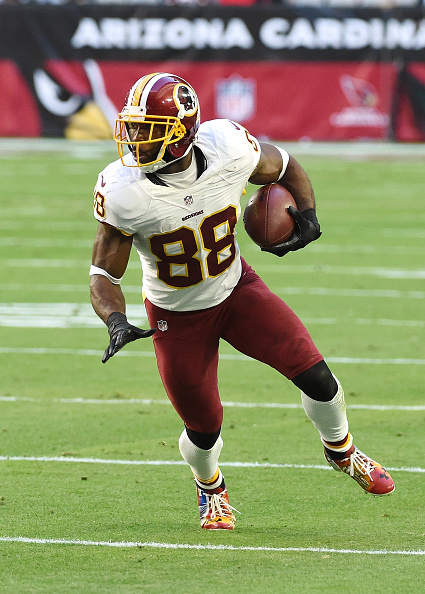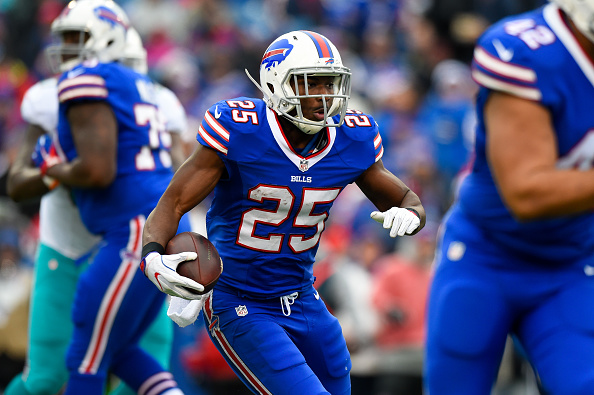The SMART system was created as a set of rules and principles for Rick Wolf and I (better known as Colton and the Wolfman), as fantasy football co-owners, to use while drafting and playing during the season. Back in the summer of 2003, we had just come off our first LABR expert league fantasy baseball title and were in a dogfight attempting to defend that title (which we did on the last day of the year thanks to the now fantasy-famous Josh Towers, but I digress). At that point, we realized three fundamental truths at the exact same time (yes, a Hamilton reference there because why not?): 1) With a focus on winning fantasy baseball and you know, demanding day jobs, we needed a simple system for fantasy football success as we did not have the amount of time we needed to out-work our full-time sports professional competition; 2) brutal honesty demanded that we admit that we were not going to be better talent evaluators than those who study football all year long, go to training camp and have the time to watch hours of game film per day; and 3) our baseball SMART system was proving, well smart. So, we decided to adapt the SMART concepts to football and see if we could replicate the magic. We did. Since employing the SMART system in 2003, we have won 7 expert football titles including 4 FSTA titles (and have been in the finals or semis of that 14-team league almost every year). Indeed, last year, team Colton & the Wolfman played together in four expert/industry leagues, won two and made the semi-finals in all four. The system works!
So, what is this system of which I write? The SMART system is an acronym for a set of general principles to guide you to a winning fantasy football season from the draft all the way through your championship game:
SYSTEM
 This pertains to the offensive system that is used by the player’s NFL team. Each fantasy football player needs to look at all the head coaches and offensive coordinators of each team. Some coaches love to throw to the tight end, some never do. Some coaches love to run the football, some think the run is a thing of the past. You need to factor this information into your drafting. The classic example is that Norv Turner offenses featured running backs who shattered records (see Emmitt Smith and Ladainian Tomlinson – two pretty decent backs in their day, yes?). This year, it is no great secret that the Cowboys will run early and often behind that offensive line. However, careful study will also tell you that Kyle Shanahan gets a lot out of his wide receivers, Pierre Garcon had a huge year under Shanahan in Washington when they were last together and they are reunited in San Francisco. The S in System says Garcon is likely to outperform his ADP or auction price. SMART system followers know this and will take advantage. Continue reading all pre-season and during the season at fantasyalarm.com and continue listening to The Fantasy Alarm Show and Colton and the Wolfman on SiriusXM for more SMART analysis.
This pertains to the offensive system that is used by the player’s NFL team. Each fantasy football player needs to look at all the head coaches and offensive coordinators of each team. Some coaches love to throw to the tight end, some never do. Some coaches love to run the football, some think the run is a thing of the past. You need to factor this information into your drafting. The classic example is that Norv Turner offenses featured running backs who shattered records (see Emmitt Smith and Ladainian Tomlinson – two pretty decent backs in their day, yes?). This year, it is no great secret that the Cowboys will run early and often behind that offensive line. However, careful study will also tell you that Kyle Shanahan gets a lot out of his wide receivers, Pierre Garcon had a huge year under Shanahan in Washington when they were last together and they are reunited in San Francisco. The S in System says Garcon is likely to outperform his ADP or auction price. SMART system followers know this and will take advantage. Continue reading all pre-season and during the season at fantasyalarm.com and continue listening to The Fantasy Alarm Show and Colton and the Wolfman on SiriusXM for more SMART analysis.
MANAGEMENT
Manage your draft preparation and your team all season.
CRITICAL BASIC RULES FOR DRAFTING
DO NOT DRAFT A QB EARLY– you will get good QB value later in the draft. Do not pass on quality RBs or WRs in favor of an early QB. Want proof? Ok, in the 14 team FSTA expert draft in June, team CTW rostered Matthew Stafford at the end of round 9 (pick 126) – a QB whose worst year in the last 6 years was 4200+ passing yards and 24 TD. Oh and Philip Rivers was still available at that slot as well (we chose to go with the QB who is younger and whose running game is actually a short pass game that will inflate his fantasy stats but Rivers would have been great value there as well). By waiting for a QB, we managed to use our 8 earlier picks on 3 starting RB, 4 starting WR and a starting TE.
RUNNING BACKS RULE – Draft an elite running back in the first round. Draft a full-time starting running back in the second round unless a superstud WR has fallen to you. In leagues with a Flex position that allow you to start three running backs per week, we always get three running backs in the first four rounds. Finding productive wide receivers later in the draft is simply easier than finding an elite Running Back. With the way the game is played today, there are fewer and fewer bell cow backs and more and more productive wide receivers. Thus, it is much, much easier to find a productive receiver later in the draft. Those who argue they found running back value late were just hoping for injury to allow their backup to ascend. Grabbing talent and opportunity late in the draft is great but not as a way to fill your starting lineup from the get go.
Listen to Rick Wolf & Glenn Colton breakdown Why three running backs in the first four rounds.
TRACK COMPETITOR’S NEEDS – Make sure you keep up with all the teams so that you know what they need. For example, if you need both a QB and a TE and notice that all of the teams who pick before you go again have their QB1, then wait on QB and take the TE.
FOLLOW THE DRAFT WHILE NOT ON THE CLOCK – Watch the board for position runs and other opportunities. Most importantly, there is NO excuse for making a bad pick because your guy was picked one spot before you. Have a plan A, plan B and plan C for every pick.
RULES FOR IN-SEASON MANAGEMENT
PAY ATTENTION TO BYE WEEK – Grab your BYE week replacements a couple of weeks in advance to avoid overpaying in FAAB. Also, players on BYE in a given week do not get picked up, but can provide value for you. Your competitors will be shocked that player is no longer on the board in FAAB the next week.
PLAYOFF WEEKS – Look ahead and roster players with great matchups in your critical playoff weeks. This will pay off.
AGE
The older the player, the more likely they are to get hurt or suffer a steep decline in performance. For RBs, it is about talent, youth and opportunity. For WRs, it often takes some time to learn a system and to get used to the NFL. So we believe that 2nd & 3rd year WRs provide better value – especially when fantasy owners think that player underperformed the year before. Of course, we are not saying to pass on an older Drew Brees or Tom Brady in a redraft league to take a younger Carson Wentz. However, we are saying that when you have players close in value, favor the younger player.
RESERVES (Hand-cuffing)
.jpg) In a typical fantasy football league, there are 12 fantasy teams with 16 NFL players on every roster. There are 32 NFL teams. Thus, you are guaranteed to have 2 starting QBs, 2 starting RBs and 2 starting WRs. Assume you draft 2 QBs, 4 RBs, 4 WRs, 2 TEs, K and DT to make up your 16 players. That leaves you with two spaces. Think about using at least one of those two spots to back up your best RB (provided he is in a good system and has a capable backup). For example, owners of Ezekiel Elliott need to jump up and make sure they own Darren McFadden. Last year, the Le'veon Bell owners sure were glad they owned D’Angelo Williams. Just sayin.
In a typical fantasy football league, there are 12 fantasy teams with 16 NFL players on every roster. There are 32 NFL teams. Thus, you are guaranteed to have 2 starting QBs, 2 starting RBs and 2 starting WRs. Assume you draft 2 QBs, 4 RBs, 4 WRs, 2 TEs, K and DT to make up your 16 players. That leaves you with two spaces. Think about using at least one of those two spots to back up your best RB (provided he is in a good system and has a capable backup). For example, owners of Ezekiel Elliott need to jump up and make sure they own Darren McFadden. Last year, the Le'veon Bell owners sure were glad they owned D’Angelo Williams. Just sayin.
TALENT
Football is more predictable than baseball. The players with talent often score most of the fantasy points. You should use a couple of roster spots on the best talented players irrespective of their current slot on the depth chart. Last year, those who followed the T in SMART owned Jay Ajayi despite the noise about his being third string.
Bottom line – there is so much information out there and so many people who are really good at fantasy football. Like us, you are unlikely to be the best talent evaluator or the person with the most time to watch film. You need an edge to win. The SMART system can be that edge. It has been for us since 2003.

